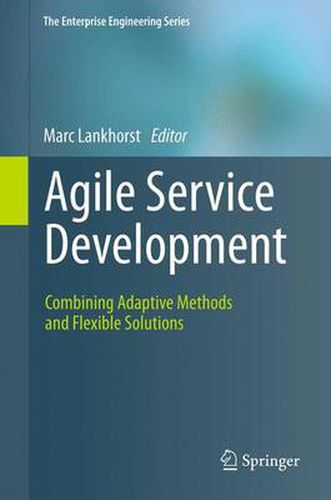Readings Newsletter
Become a Readings Member to make your shopping experience even easier.
Sign in or sign up for free!
You’re not far away from qualifying for FREE standard shipping within Australia
You’ve qualified for FREE standard shipping within Australia
The cart is loading…






This title is printed to order. This book may have been self-published. If so, we cannot guarantee the quality of the content. In the main most books will have gone through the editing process however some may not. We therefore suggest that you be aware of this before ordering this book. If in doubt check either the author or publisher’s details as we are unable to accept any returns unless they are faulty. Please contact us if you have any questions.
Economies around the globe have evolved into being largely service-oriented economies. Consumers no longer just want a printer or a car, they rather ask for a printing service or a mobility service. In addition, service-oriented organizations increasingly exploit new devices, technologies and infrastructures. Agility is the ability to deal with such changing requirements and environments. Agile ways of working embrace change as a positive force and harness it to the organization’s competitive advantage.
The approach described in this book focuses on the notion of a service as a piece of functionality that offers value to its customers. Instead of solely looking at agility in the context of system or software development, agility is approached in a broader context. The authors illustrate three kinds of agility that can be found in an agile enterprise: business, process and system agility. These three types of agility reinforce each other and establish the foundation for the agile enterprise. Architecture, patterns, models, and all of the best practices in system development contribute to agile service development and building agile applications.
This book addresses two audiences. On the one hand, it aims at agile and architecture practitioners who are looking for more agile ways of working in designing and building business services or who are interested in extending and improving their agile methods by using models and model-based architectures. On the other hand, it addresses students of (enterprise) architecture and software development or service science courses, both in computer science and in business administration.
$9.00 standard shipping within Australia
FREE standard shipping within Australia for orders over $100.00
Express & International shipping calculated at checkout
This title is printed to order. This book may have been self-published. If so, we cannot guarantee the quality of the content. In the main most books will have gone through the editing process however some may not. We therefore suggest that you be aware of this before ordering this book. If in doubt check either the author or publisher’s details as we are unable to accept any returns unless they are faulty. Please contact us if you have any questions.
Economies around the globe have evolved into being largely service-oriented economies. Consumers no longer just want a printer or a car, they rather ask for a printing service or a mobility service. In addition, service-oriented organizations increasingly exploit new devices, technologies and infrastructures. Agility is the ability to deal with such changing requirements and environments. Agile ways of working embrace change as a positive force and harness it to the organization’s competitive advantage.
The approach described in this book focuses on the notion of a service as a piece of functionality that offers value to its customers. Instead of solely looking at agility in the context of system or software development, agility is approached in a broader context. The authors illustrate three kinds of agility that can be found in an agile enterprise: business, process and system agility. These three types of agility reinforce each other and establish the foundation for the agile enterprise. Architecture, patterns, models, and all of the best practices in system development contribute to agile service development and building agile applications.
This book addresses two audiences. On the one hand, it aims at agile and architecture practitioners who are looking for more agile ways of working in designing and building business services or who are interested in extending and improving their agile methods by using models and model-based architectures. On the other hand, it addresses students of (enterprise) architecture and software development or service science courses, both in computer science and in business administration.